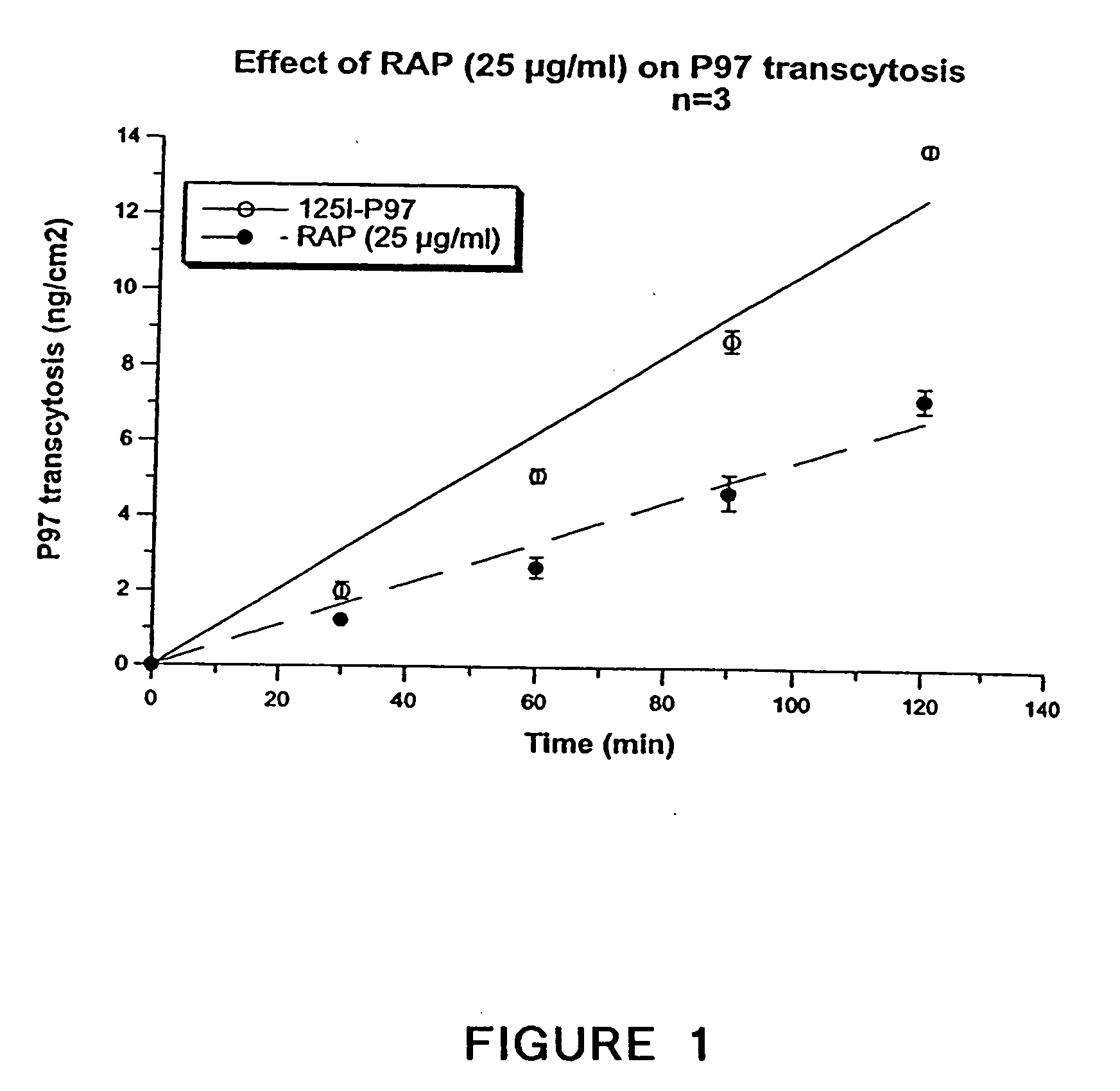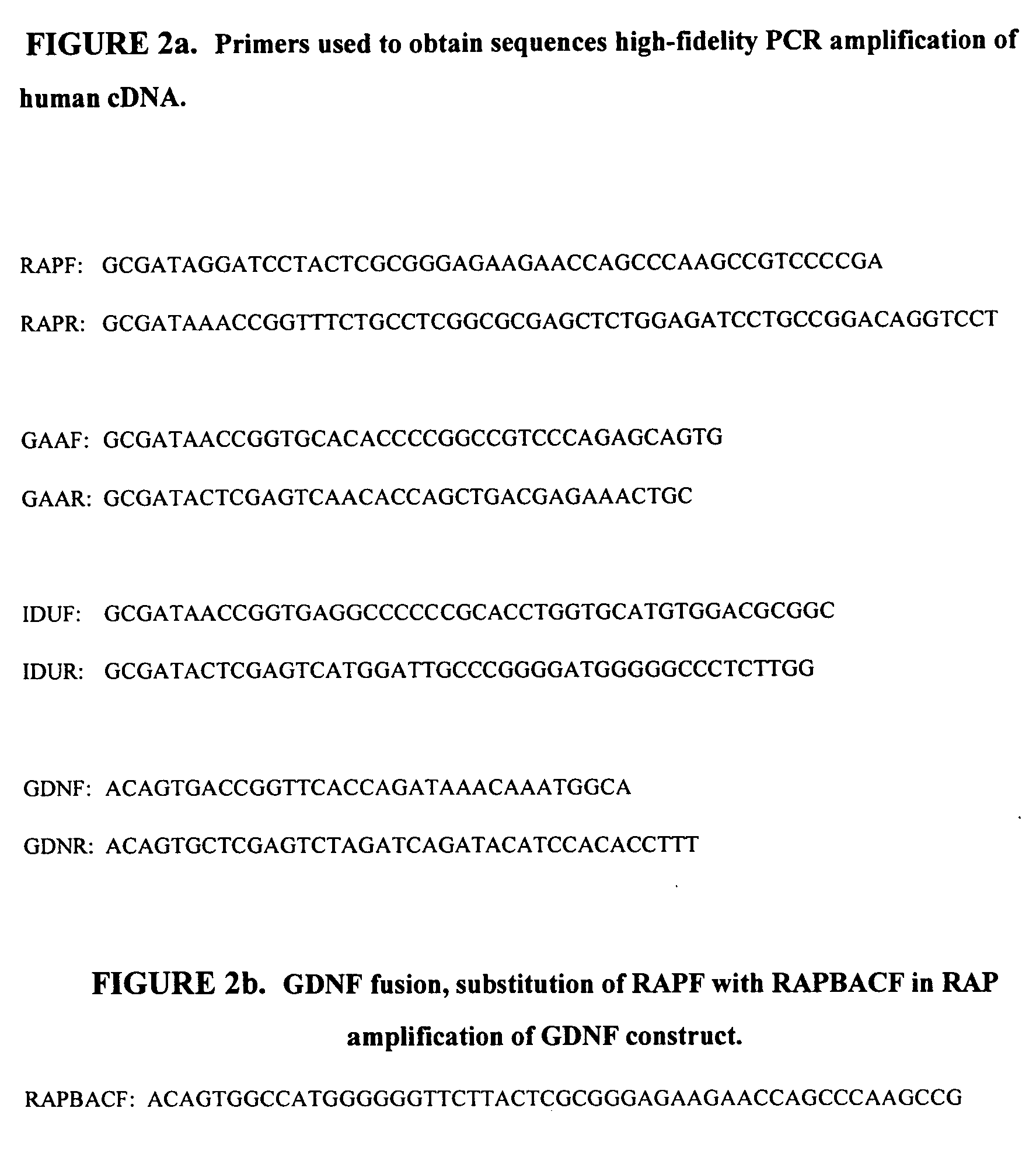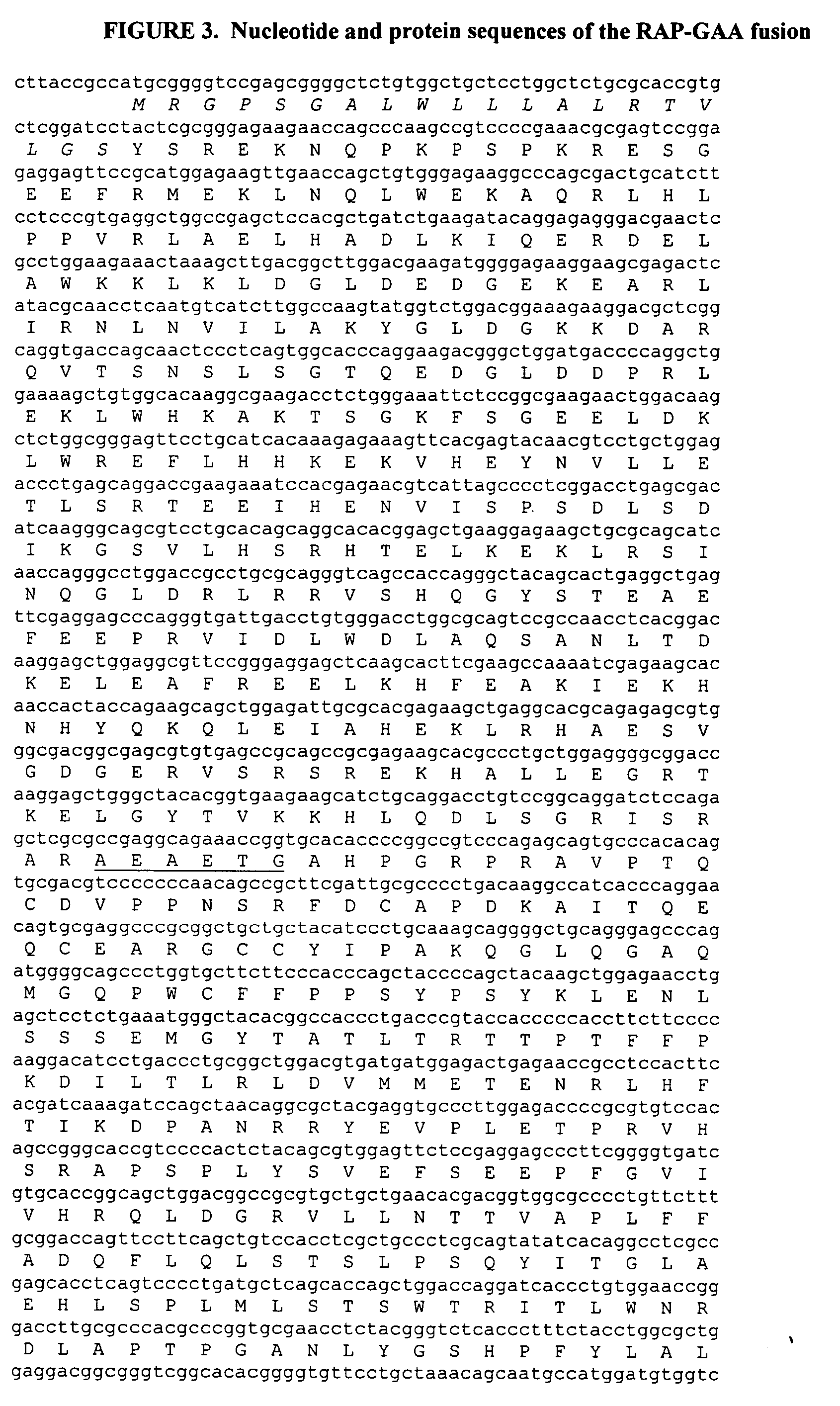Use of the chaperone receptor-associated protein (RAP) for the delivery of therapeutic compounds to the brain and other tissues
- Summary
- Abstract
- Description
- Claims
- Application Information
AI Technical Summary
Benefits of technology
Problems solved by technology
Method used
Image
Examples
example ii
Construction, Expression, Purification and Characterization of RAP Fusions
[0250] Expression constructs encoding fusions between the human receptor-associated protein (RAP) and human alpha-glucosidase (GAA), alpha-L-iduronidase (IDU) or glial cell-derived neurotrophic factor (GDNF) were prepared. For this purpose, a sequence that encodes RAP was fused to the 5′-end of sequences that encode the different fusion partners. All sequences were obtained by high-fidelity PCR amplification of human cDNA with the following primers shown in FIG. 2a. The GDNF fusion was designed for expression in bacteria. To this end, primer RAPBACF was substituted for RAPF in the RAP amplification for this construct (FIG. 2b).
[0251] The 5′-end of RAP was truncated to remove the signal peptide sequence. Instead, an in-frame BamHI site, which encodes the dipeptide GS, was added for the mammalian expression construct. Sequence encoding the tetrapeptide MGGS with an NcoI site at the 5′-end was added for the bac...
example iii
Uptake and Distribution of Unconjugated RAP to the Brain
[0263] The distribution of RAP to brain was measured using a mouse in situ perfusion model. Volumes of distribution (Vd) for RAP, the positive control transferrin and the negative control albumin, were determined over a perfusion interval of 5 minutes. In addition, the relative quantities of the test proteins in the vascular and parenchymal fractions of the perfused brain were determined using the capillary depletion technique (Gutierrez, et al., J. Neuroimmunology 47(2):169-76 (1993)). The results shown in FIG. 11 include an observed, corrected Kinflux of 1 μL / g / min for transferrin. RAP had an observed, corrected Kinflux of 2.2 μL / g / min. RAP is taken up into brain.
[0264] A separate experiment was carried out at a single, 5-minute time-point to determine whether RAP is able to traverse the brain vasculature and enter the parenchyma. Brains were harvested as before, but were subjected to a capillary depletion procedure to dete...
example iv
Measurement of Specific Uptake of RAP-GAA into Enzyme-Deficient Patient Fibroblasts
[0265] The uptake of RAGA into cells deficient in GAA was characterized. The cell line used was GM244 (Coriell Cell Repository), a primary cell line isolated from a patient with glycogen storage disorder type II (Pompe's disease). These fibroblasts take up phosphorylated, recombinant GAA via the mannose-6-phosphate receptor, but also have LRPI receptors, which bind RAP. In order to identify the receptors involved in uptake of different test ligands, samples containing excess free RAP or mannose-6-phosphate were prepared.
[0266] Dilutions of RAP-GAA were made in the uptake medium (Dulbecco's Modified Eagle's Medium supplemented with 25 mM HEPES pH 7.0, 2 mM L-glutamine and 250 pg / mL bovine serum albumin) to yield fusion protein concentrations of 33, 11, 3.7, 1.2, 0.4, and 0.1 nM. The effect of 3 mM mannose-6-phosphate, 500 nM RAP and a combination of the two on the uptake of 5 nM RAP-GAA was also assa...
PUM
| Property | Measurement | Unit |
|---|---|---|
| Volume | aaaaa | aaaaa |
| Time | aaaaa | aaaaa |
| Time | aaaaa | aaaaa |
Abstract
Description
Claims
Application Information
 Login to View More
Login to View More - R&D
- Intellectual Property
- Life Sciences
- Materials
- Tech Scout
- Unparalleled Data Quality
- Higher Quality Content
- 60% Fewer Hallucinations
Browse by: Latest US Patents, China's latest patents, Technical Efficacy Thesaurus, Application Domain, Technology Topic, Popular Technical Reports.
© 2025 PatSnap. All rights reserved.Legal|Privacy policy|Modern Slavery Act Transparency Statement|Sitemap|About US| Contact US: help@patsnap.com



